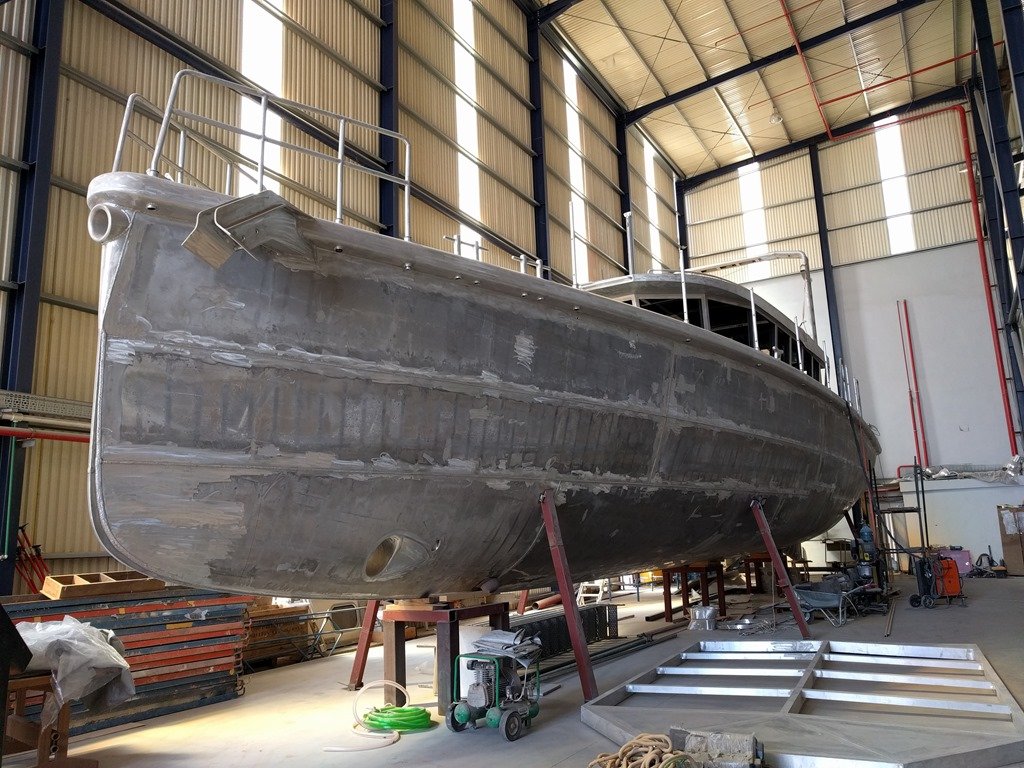Oops, that was only one question.
Personally I wouldn’t be comfortable without a generator, if go no other reason than to provide a backup power source.
And I’m really envious of your 5kw of solar.
I’m also interested that you have separate inverter systems for 120 and 240v. The alternative is to use an auto transformer or just a reduction transformer off a 240v inverter system. Curious what your thinking is on this. I have personally become very sensitive to the standby power draw of the Victron’s, all of which run all the time. Others like outback idle parallel inverters and bring them online progressively as loads demand.
Quite right Peter that having a generator adds another layer of redundancy or backup for onboard AC power and we thought long and hard about it as we designed Möbius. Our thinking is that we have two independent "generators" onboard in the form of our two ~6kW alternators on the Gardner. Granted, this makes Mr. Gee our Gardner, a single point of failure, but we think the probability of loosing the engine or both alternators is acceptably low.
I'm glad you brought up the question about inverters vs autotransformers and I would REALLY appreciate knowing your thoughts on the pros/cons of each and which way you are going on your new build? I'm a bit undecided as to the best route to go for the 120V via inverter vs Autotransformer and we have not placed the Victron order quite yet but need to soon.
I've worked through the parasitic “No loads” which the Victron inverters have and have convinced myself at least that these are manageable with a combination of running only as many inverters as needed for a given situation, just one at night on anchor for example, and then using some of Victron’s “Search Mode” to reduce the “no load” drains. I don’t have any personal experience with these settings yet so if you or others have direct experience with these MultiPlus inverter/chargers I would sure appreciate you sharing it On our previous boat I just ran our MultiPlus units with AES (Automatic Economy Switch) turned on which as per Victron: “If this setting is turned ‘on’, the power consumption in no-load operation and with low loads is decreased by approx. 20%, by slightly
'narrowing' the sinusoidal voltage. Applicable in stand-alone configuration only.”. However on the new boat I will experiment with the additional “Search Mode” option which again as per Victron manuals is “If search mode is ‘on’, the power consumption in no-load operation is decreased by approx. 70%. In this mode the MultiPlus, when
operating in inverter mode, is switched off in case of no load or very low load, and switches on every two seconds for a short period. If
the output current exceeds a set level, the inverter will continue to operate. If not, the inverter will shut down again.
The Search Mode “shut down” and “remain on” load levels can be set with VEConfigure.
The standard settings are:
Shut down: 40 Watt (linear load)
Turn on: 100 Watt (linear load)”
Again, I look forward to your much more informed opinion and what you are doing regarding things like these parasitic loads. You mentioned that “Others like outback idle parallel inverters and bring them online progressively as loads demand.” And I’m not sure how this is different than the MultiPlus “Search Mode” and would appreciate any help with understanding the differences.
I should also mention that being a “Battery Based” boat, DC is our primary voltage, both 24 and 12 and so where given the choice we have 24V DC equipment rather than 220v AC so in many situations we can simply turn the inverters off. For example all our navigation equipment is running off 24DC, we are all PC based with Furuno and TimeZero so no MFD. All our many monitors are all 24V DC as are all our personal techie devices running on 24V DC. Hot water primarily comes from our Kabola diesel boiler and/or the heat exchanger from the Gardner when he is running so no AC needs there for domestic hot water or our in floor heating. We do have a 240V heating coil in our calorifier so that’s always an option if we are on shore power or need such a load. However we definitely have our share of equipment that requires AC such as all electric cooking (induction hob, smart oven and BBQ) and washing machine. We do have the cabinets and infrastructure for a dishwasher and dryer but we prefer to not have these onboard, a very personal decision I appreciate, but then what decision in building a boat isn’t?
Thank for the great questions Peter, that’s one of the biggest values and reasons for blogging and posting right?
- Wayne


